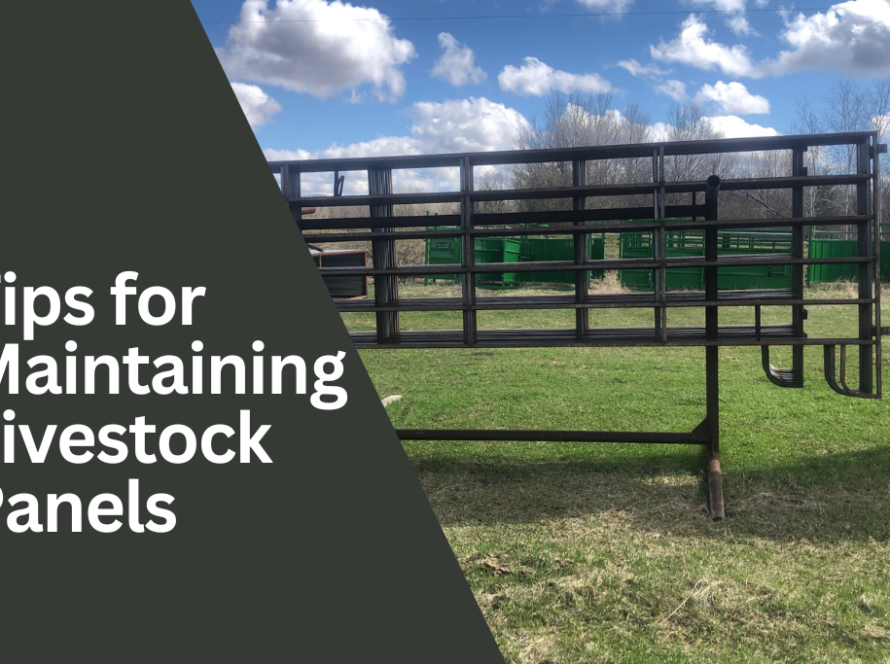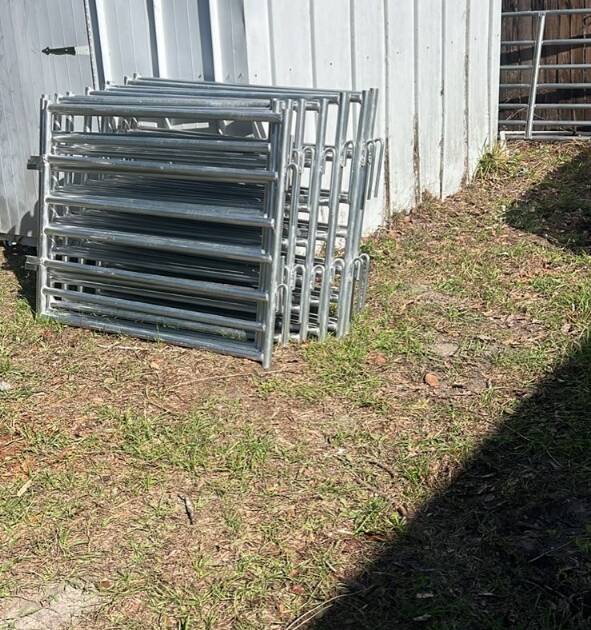Introduction
When it comes to managing livestock, the comfort and well-being of the animals should always be a priority. One often overlooked but vital aspect of livestock management is the spacing in corral panels. Proper spacing in corral panels ensures that your animals have enough room to move comfortably while maintaining control over their movements. It can significantly impact the animals’ stress levels, behavior, and overall health.
Improper spacing, on the other hand, can cause overcrowding, leading to a variety of problems such as injuries, stress, and even aggression among the livestock. Whether you’re working with cattle, goats, sheep, or other animals, understanding the right amount of space needed within the corral is essential to creating a safe and humane environment.
In this article, we’ll discuss the importance of proper spacing in corral panels and how it affects animal comfort and safety. From reducing stress to preventing injury, the correct panel spacing ensures that your livestock is well-managed while promoting a healthy and low-stress environment. Let’s dive into the key factors that influence panel spacing and why it’s essential for your operation.
1. Preventing Overcrowding and Stress
Why It’s Important:
Overcrowding in a corral can lead to severe stress for livestock. When animals are confined in too small of a space, they may experience heightened anxiety, which can negatively affect their health and behavior.
What to Look For:
- Adequate Space per Animal: The general rule is that each animal should have enough space to stand, lie down, and turn around comfortably. For cattle, a good guideline is to allow about 10 to 15 square feet per head in a corral, depending on the size of the animal. Smaller animals like goats or sheep may need slightly less space but should still be given adequate room to prevent overcrowding.
- Avoiding Aggression: Overcrowded animals are more likely to become agitated and aggressive towards one another. By maintaining proper spacing, you reduce the chances of fights, injuries, or bullying among livestock.
- Decreased Stress Levels: Proper spacing helps reduce the physical and psychological stress on animals. Less stress leads to better health, faster weight gain, and improved overall productivity, especially in dairy or meat-producing animals.
2. Promoting Natural Behavior and Comfort
Why It’s Important:
Livestock, like all animals, need room to express their natural behaviors. Whether it’s grazing, resting, or socializing, having adequate space in a corral allows animals to behave more naturally, leading to better mental and physical well-being.
What to Look For:
- Space for Movement: Proper spacing ensures that animals can walk, stretch, and turn around without difficulty. Without enough space, they may be forced to stand in awkward positions for extended periods, leading to discomfort or musculoskeletal problems.
- Room for Rest and Socialization: Livestock, especially herd animals, thrive when they have space to socialize. Proper spacing in corral panels gives them the freedom to interact with others in a stress-free environment, which is crucial for their emotional health.
- Comfortable Sleeping Areas: When animals are provided with enough space, they can lie down comfortably and spread out when resting. This reduces the risk of developing joint problems or sores caused by standing or lying in cramped spaces for too long.
3. Improved Safety for Livestock and Handlers
Why It’s Important:
Proper spacing doesn’t just benefit the animals—it also makes handling them easier and safer for farm workers. When animals have adequate space, it is easier to manage them, whether it’s for sorting, medical checks, or moving them in and out of the corral.
What to Look For:
- Easier Movement of Livestock: If the corral is too tight, livestock may become agitated or resistant to moving. Proper spacing ensures that animals can move freely, reducing the likelihood of accidents or injury.
- Safer Handling for Farmers: With enough space, farmers or handlers can work more efficiently and safely, as there is less risk of animals getting cornered or panicking. This is particularly important during procedures like vaccinations or veterinary care.
- Reduced Risk of Injury: Overcrowding can increase the risk of animals pushing against each other, leading to falls or crushing injuries. Adequate spacing ensures that animals have enough room to avoid physical contact that could result in harm.
4. Maintaining Healthy Livestock Conditions
Why It’s Important:
Livestock health is directly impacted by the amount of space they have in their living environment. Proper spacing in corral panels helps prevent a range of health issues, from respiratory problems to infections that could arise from poor hygiene or overcrowded conditions.
What to Look For:
- Ventilation: Adequate space allows for better airflow within the corral, which is crucial for preventing respiratory issues, especially in areas with high humidity or poor ventilation. Properly spaced panels promote airflow, reducing the chances of disease spreading among animals.
- Access to Food and Water: In crowded conditions, some animals may be unable to access food or water, leading to malnutrition or dehydration. Proper spacing ensures that each animal has enough room to eat and drink without competition, promoting better health and growth.
- Hygienic Environment: Overcrowding often results in waste build-up, leading to unsanitary conditions. With proper panel spacing, there is more room for waste to be cleared away and for animals to stay clean and healthy.
5. Customizing Panel Spacing for Different Livestock Types
Why It’s Important:
Different types of livestock have varying space requirements, so it’s important to customize the spacing of corral panels to meet the specific needs of each species. For example, cattle require more space than smaller animals like goats or chickens.
What to Look For:
- Cattle Corral Panels: For adult cattle, a spacing of 5 to 6 feet between vertical bars is often recommended. This provides enough room for the animals to move comfortably without the risk of them getting stuck or trapped between bars.
- Smaller Animals: Goats, sheep, or pigs may require less space but still need proper panel spacing to prevent overcrowding and ensure they can move freely. For smaller animals, look for corral panels with smaller gaps, typically around 3 to 4 feet between bars.
- Adjustable or Modular Panels: Some corral systems are modular or adjustable, allowing you to modify the spacing between the bars depending on the type of livestock you are working with. This flexibility helps ensure that each animal has enough room without compromising on safety.
6. Cost-Efficiency and Long-Term Benefits
Why It’s Important:
While investing in corral panels with proper spacing might initially seem costly, the long-term benefits far outweigh the initial expense. Providing animals with enough space leads to better overall health and fewer veterinary costs, making it a sound financial decision.
What to Look For:
- Durable and Long-Lasting Materials: When choosing corral panels, make sure to select high-quality, durable materials that will last for years. Stainless steel or galvanized steel is ideal for preventing rust and wear.
- Fewer Health Complications: Proper spacing helps prevent stress-related health problems, which can lead to fewer veterinary bills in the future. Healthy animals are more productive, whether for breeding, dairy, or meat production.
- Increased Productivity: Healthy, well-rested animals are more likely to be productive. For instance, dairy cows that are less stressed and better rested produce higher-quality milk, while healthy meat animals grow faster and are more marketable.
Conclusion
Proper spacing in corral panels is essential for the comfort, safety, and well-being of your livestock. From preventing overcrowding and reducing stress to improving animal health and safety, proper panel spacing plays a significant role in the success of your operation. By taking the time to ensure that your corral panels provide the right amount of space, you not only promote better livestock behavior and health but also create a safer and more efficient environment for handlers.
Investing in the right corral panel spacing is a smart decision for both the short-term and long-term success of your farm or ranch. Whether you are managing cattle, sheep, goats, or other livestock, understanding and providing for their space needs is key to a well-run, healthy operation.
FAQs
- How much space do cattle need in a corral? Cattle typically need around 10 to 15 square feet per head in a corral. Larger cattle may require more space to ensure comfort and safety.
- What happens if livestock are overcrowded in a corral? Overcrowding can cause stress, aggression, and injuries among livestock. It can also lead to health problems, such as respiratory issues, malnutrition, and difficulty accessing water.
- Can I use the same corral panels for different types of livestock? Yes, but it’s important to adjust the spacing between the bars depending on the type of animal. Smaller animals like goats or sheep may need smaller gaps between bars compared to larger animals like cattle.
- What materials should I look for in corral panels? Look for durable materials like galvanized steel or powder-coated metal to prevent rust and ensure long-lasting panels. These materials are also easier to maintain and clean.
- How often should I adjust the spacing of my corral panels? You generally won’t need to adjust the spacing frequently unless you’re transitioning between different types of livestock or modifying the pen’s layout. Always check the spacing periodically to ensure it meets the needs of your animals.



